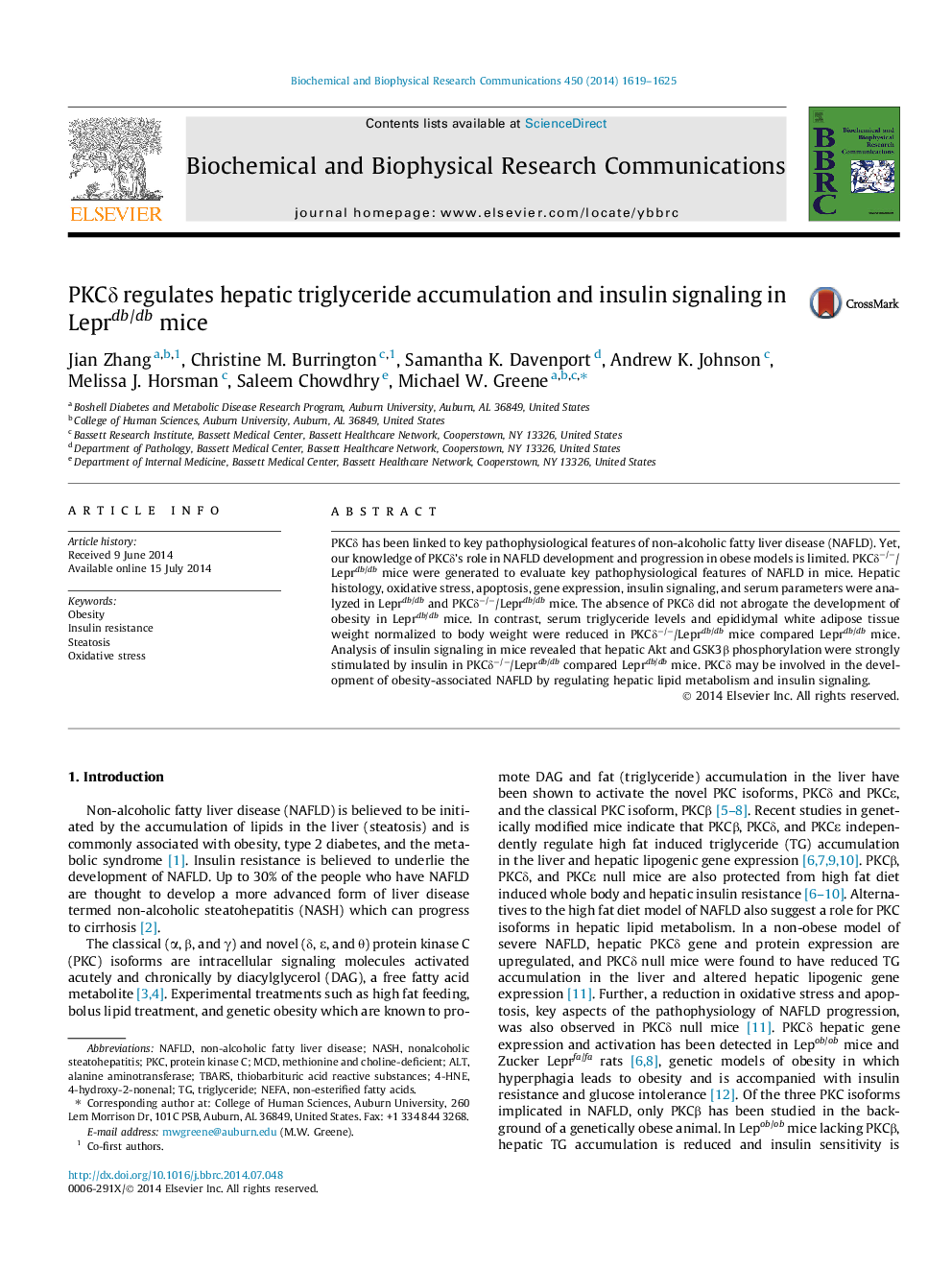| Article ID | Journal | Published Year | Pages | File Type |
|---|---|---|---|---|
| 8297527 | Biochemical and Biophysical Research Communications | 2014 | 7 Pages |
Abstract
PKCδ has been linked to key pathophysiological features of non-alcoholic fatty liver disease (NAFLD). Yet, our knowledge of PKCδ's role in NAFLD development and progression in obese models is limited. PKCδâ/â/Leprdb/db mice were generated to evaluate key pathophysiological features of NAFLD in mice. Hepatic histology, oxidative stress, apoptosis, gene expression, insulin signaling, and serum parameters were analyzed in Leprdb/db and PKCδâ/â/Leprdb/db mice. The absence of PKCδ did not abrogate the development of obesity in Leprdb/db mice. In contrast, serum triglyceride levels and epididymal white adipose tissue weight normalized to body weight were reduced in PKCδâ/â/Leprdb/db mice compared Leprdb/db mice. Analysis of insulin signaling in mice revealed that hepatic Akt and GSK3β phosphorylation were strongly stimulated by insulin in PKCδâ/â/Leprdb/db compared Leprdb/db mice. PKCδ may be involved in the development of obesity-associated NAFLD by regulating hepatic lipid metabolism and insulin signaling.
Keywords
NAFLD4-HNETBARSmethionine and choline-deficientALTNEFAPKCMCD4-hydroxy-2-nonenalAlanine aminotransferasenonalcoholic steatohepatitisnon-esterified fatty acidsnon-alcoholic fatty liver diseasetriglycerideSteatosisOxidative stressObesityInsulin resistancethiobarbituric acid reactive substancesNash Protein kinase C
Related Topics
Life Sciences
Biochemistry, Genetics and Molecular Biology
Biochemistry
Authors
Jian Zhang, Christine M. Burrington, Samantha K. Davenport, Andrew K. Johnson, Melissa J. Horsman, Saleem Chowdhry, Michael W. Greene,
